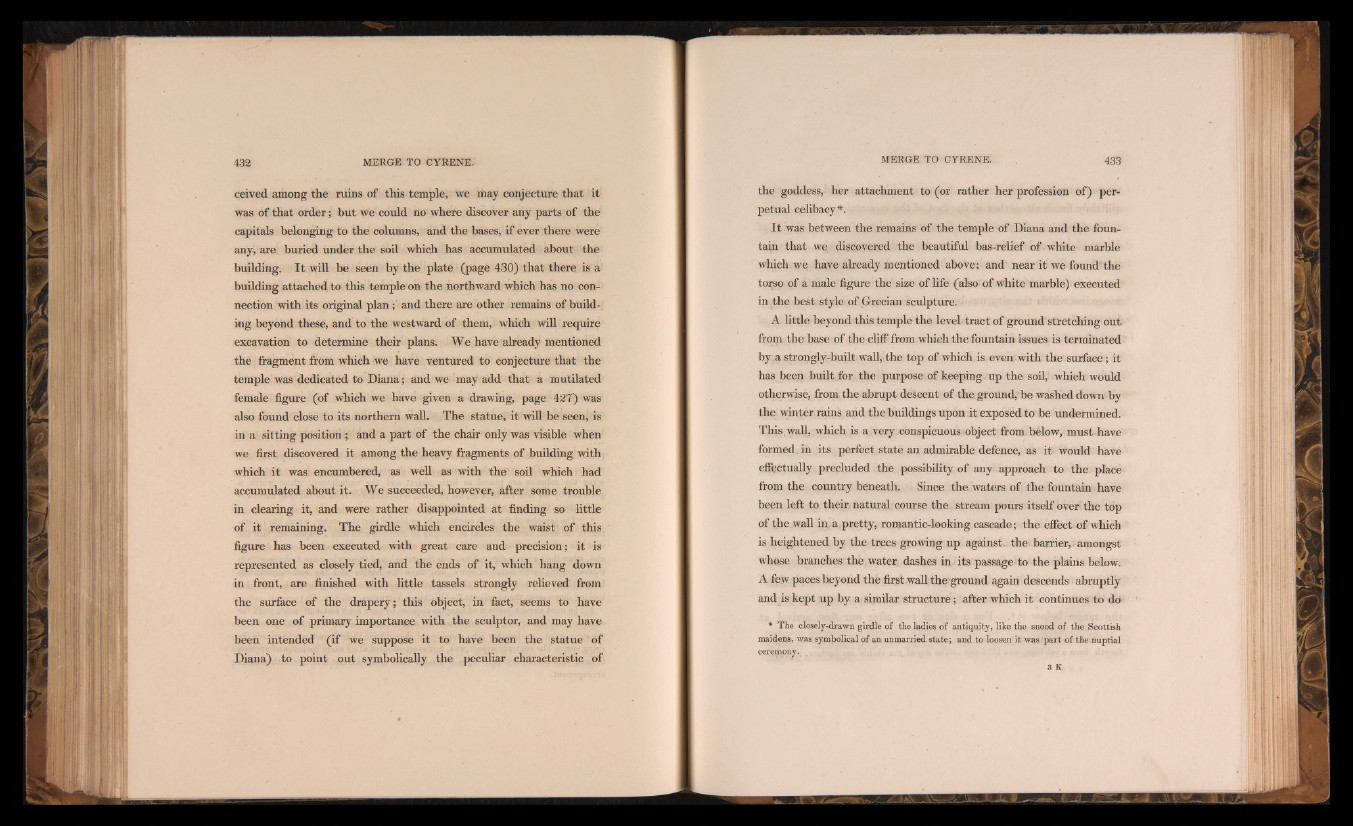
ceived among the ruins of this temple, we may conjecture that it
was of that order; but we could no where discover any parts of the
capitals belonging to the columns, and the bases, if ever there were
any, are buried under the soil which has accumulated about the
building. I t will be seen by the plate (page 430) that there is a
building attached to this temple on the northward which has no connection
with its original plan; and there are other remains of building
beyond these, and to the westward of them, which will require
excavation to determine their plans. We have already mentioned
the fragment from which we have ventured to conjecture that the
temple was dedicated to Diana; and we may add that a mutilated
female figure (of which we have given a drawing, page 427) was
also found close to its northern wall. The statue, it will be seen, is
in a sitting position ; and a part of the chair only was visible when
we first discovered it among the heavy fragments of building with
which it was encumbered, as well as with the soil which had
accumulated about it. We succeeded, however, after some trouble
in clearing it, and were rather disappointed at finding so little
of it remaining. The girdle which encircles the waist of this
figure has been executed with great care and precision; it is
represented as closely tied, and the ends of it, which hang down
in front, are finished with little tassels strongly relieved from
the surface of the drapery; this object, in fact, seems to have
been one of primary importance with the sculptor, and may have
been intended (if we suppose it to have been the statue of
Diana) to point out symbolically the peculiar characteristic of
the goddess, her attachment to (or rather her profession of) perpetual
celibacy*. I
I t was between the remains of the temple of Diana and the fountain
that we, discovered the beautiful bas-relief of . white marble
which we have already mentioned above;-and near it we found the
torso of a male figure the size of life (also of white marble) executed
in .the best style, of Grecian sculpture.
A little beyond this temple the level-tract of ground stretching out
from the base of the cliff from which the fountain issues is terminated
by .a strongly-built wall, the top of which is even with thesurface; it
has been builf for, the purpose of keeping up the soil,' which would
otherwise, from the abrupt descent of the ground, be washed down by
the winter rains and the buildings upon it exposed to be undermined.
This wall, which is a very conspicuous object from below, must have
formed in its. perfect state an admirable defence, as i t would have
effectually precluded the possibility of any approach to the place
from the country beneath. . Since the waters of the fountain have
been left to their natural course the stream pours itself over the top
of the .wall in a.pretty, romantic-looking cascade; the effect of which
is heightened by the trees growing up against, the barrier, amongst
whose branches the. water dashes in. its passage to the plains below.
A few paces beyond the first wall the ground again descends abruptly
and is kept up by a similar structure; after which it continues to do
* The closely-drawn girdle of the ladies of antiquity, like the snood of the Scottish
maidens, was symbolical of an unmarried state; and to loosen it was p a rt of the nuptial
ceremony.